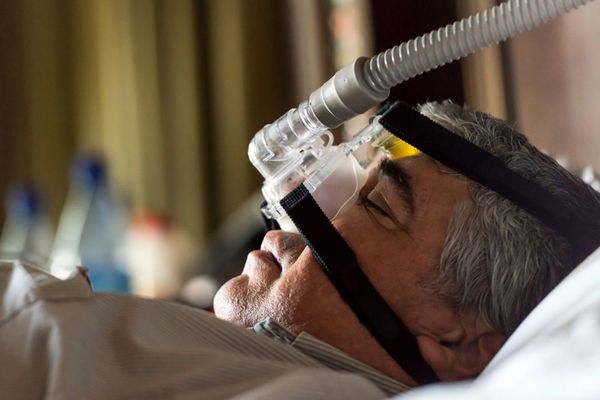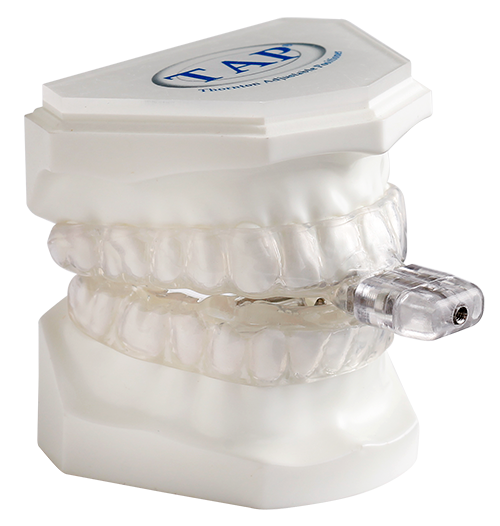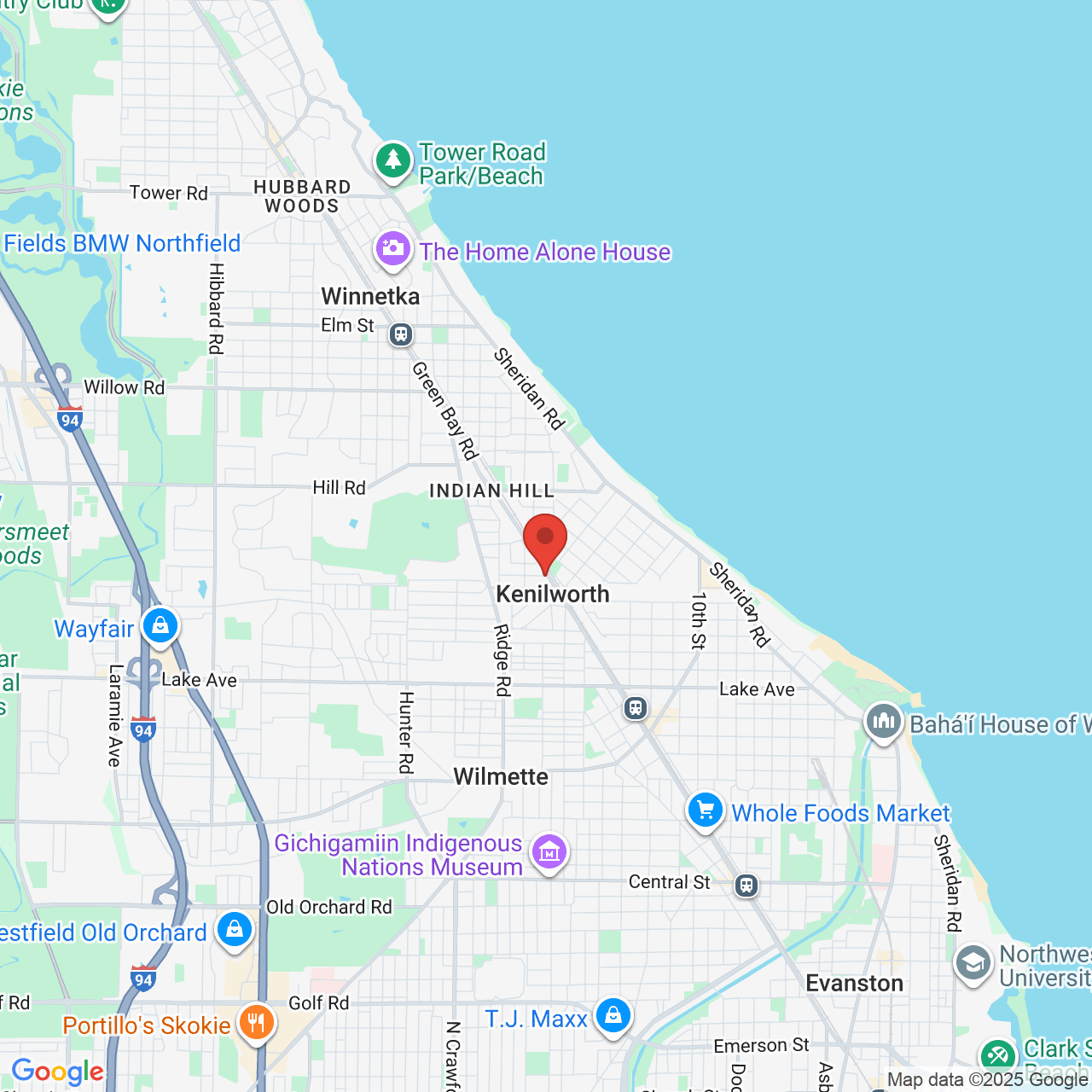Solutions for Sleep Apnea
Sleep apnea is a disorder in which breathing repeatedly stops and starts during sleep. It is often characterized by loud snoring, insomnia, and restless sleep. In addition to disrupting rest, it can lead to serious health problems. If you are diagnosed with mild to moderate obstructive sleep apnea, our Kenilworth, IL, dentist may be able to provide a solution. Dr. Art Carpenter offers the Thornton Adjustable Positioner (TAP®), a simple, patient-friendly treatment option for snoring and sleep apnea. To learn more, schedule a consultation today.

Exploring the Causes of Sleep Apnea
Sleep apnea is categorized into two distinct categories, depending on the cause: obstructive and central. Obstructive sleep apnea occurs when there is a physical obstruction or blockage of the airway. In most cases, this is a result of the muscles in the back of the throat relaxing and partially or fully closing the airway when you breathe. This causes the level of oxygen in the blood to drop and alerts the brain to briefly rouse you so you can replenish your oxygen. The awakening is typically so brief that you do not notice or remember it. In obstructive sleep apnea, airflow can be diminished if:
- A person has a deviated septum
- Turbinates – or filters in the nose – become swollen
- The palate and uvula are abnormally long
- The tongue is enlarged
- Excess fat makes the windpipe thicker
Central sleep apnea, by contrast, occurs when the brain fails to signal the breathing muscles to work. Affecting both children and adults, it is most often caused by heart disease, cerebrovascular disease, or congenital diseases, although high altitudes and certain medications can also play a role.
Symptoms of Sleep Apnea
People suffering from sleep apnea may experience a myriad of troublesome symptoms that can affect their daytime activities, as well as their quality of sleep. These warning signs may include:
- Loud snoring
- Restless sleep
- Forgetfulness
- Mood swings
- Depression
- Chronic headaches
- A choking sensation
- Insomnia
- Chronic fatigue
- Confusion
- Sexual dysfunction
It is important to note that other people sleeping close by, such as spouses or family members, are often more likely to notice these signs. Because sleep apnea often results in snoring or loud gasping, they are often awakened by apneic episodes.
Risk Factors for Sleep Apnea
Certain factors can put patients at an increased risk for obstructive sleep apnea. Most of these revolve around activities or genetics that affect the size of the airway. Among these are excess weight, a thick neck, a narrowed airway, smoking, nasal congestion, use of alcohol or sedatives, and a family history of sleep apnea. Men are twice as likely to have the disorder and it is significantly more prevalent in adults over 60.
Complications and Health-Related Concerns
Because sleep apnea is tied to the amount of air a person receives, it can have a cascade of effects on both the pulmonary and cardiovascular systems. Left untreated, it can lead to serious, life-threatening complications, including:
- High blood pressure: The sudden drops in blood oxygen often raise blood pressure and strain the cardiovascular system.
- Heart problems: If a patient has underlying heart disease, the repeated episodes of low blood oxygen can put them at much greater risk for a sudden cardiac event.
- Additional risks: Studies show that obstructive sleep apnea is also associated with increased risk of stroke, atrial fibrillation, congestive heart failure, and other vascular diseases.
Consequently, if you suspect that you or a loved one is suffering from sleep apnea, it is all the more important that you seek out treatment as soon as possible.
Diagnosis and Common Treatments for Sleep Apnea
Sleep apnea is typically diagnosed by your primary care doctor or a sleep specialist. It may involve an overnight sleep study or a home sleep test.
Most treatments revolve around opening up the airway. Some of the most common options include continuous positive airway pressure (CPAP) machines, oral appliances, and surgery. CPAP delivers pressurized air through a mask placed over your nose while you sleep. Although it is usually effective, many patients find it cumbersome or uncomfortable. Oral appliances work by bringing your jaw forward to keep the airway open. Surgical options are usually recommended for patients with severe sleep apnea and typically involve the removal of soft tissue blocking the airway.
The Thornton Adjustable Positioner®
Dr. Carpenter offers the TAP® device as a special type of adjustable oral appliance, which has proven extremely successful for many patients. By holding the mandible in a forward position, the TAP appliance prevents the tongue and soft tissues from collapsing over the airway.
The TAP device includes an upper and a lower tray. The upper tray has a hook mechanism that fits like a puzzle piece into a socket on the lower tray, holding the jaw in a favorable position. Through a series of jaw measurements that gauge your range of motion, Dr. Carpenter adjusts and customizes each appliance for optimal comfort. The doctor will closely monitor your progress and improvement throughout treatment and make adjustments, as necessary. With a second sleep study, he can determine whether the treatment was a success. From that point, patients may continue to use the TAP on their own.

The TAP device allows patients to adjust the position of their jaw whenever necessary.
Sleep apnea treatment using the TAP offers numerous benefits. One of the most convenient elements is its flexibility: patients can adjust the appliance themselves, if needed. For instance, if you wear the appliance for a few days but notice that you are still suffering from apneic episodes, you can adjust the appliance by turning an adjustment key to move the jaw into a more advantageous position.
Sleep apnea can have a significant negative impact on your overall quality of life.
Because the TAP creates the most open airway possible, it can achieve a more precise and strategic jaw placement than any other device currently on the market. The increments of adjustment are standardized so Dr. Carpenter and the patient can know the exact setting and can fine-tune the device at any time. Because breathing can vary depending on the night, it makes sense to use an appliance that is fully adjustable.
Devices like the TAP appliance are recommended by the American Academy of Sleep Medicine as the first therapeutic approach for mild to moderate sleep apnea. In fact, many patients whose conditions were not improved with CPAP therapy can benefit from a TAP device. Depending on your unique needs, TAP can be used in combination with a CPAP unit or replace it altogether.
Learn More about Sleep Apnea Treatments
Sleep apnea can have a significant negative impact on your overall quality of life. At our dental practice, we are dedicated to finding the most conservative and effective solutions for our patients. Contact our office online or call us at (847)251-5004 to schedule a personal consultation with Dr. Carpenter.






